From being comfortable to staying entertained, beating jetlag, keeping hydrated (and more!) – we’ve got 15 top tips for long flights to make sure you not only survive but thrive during your next long-haul flight in economy!
Some people love to fly, others simply understand that if they want to travel far and wide, a long haul flight is simply something that has to be done. But that doesn’t mean that we are all not looking for flight tips to make it as comfortable and enjoyable as possible while passing the time as quickly as possible. And that’s where we come in.
I was born in the UK but migrated to Australia over a decade ago, and in between those events, have lived in 6 countries and traveled to 60 more. Add to that my parents emigrated from England to Spain over 15 years ago, and it’s easy to see how I have found myself on 100s of long flights over the years. (And that’s not a boast, it’s just how it is).
For reference, I – and most of the international airlines and regulators – count a long-haul flight as anything above 6 hours, with ultra-long flights clocking in at a whopping 16+ hours. The longest current commercial non-stop flight is between Singapore Changi and JFK in New York and takes 18 hours and 50 minutes, covering 9,537 miles. Qantas is also gearing up to launch their 20-hour direct London to Sydney service in 2025. Ooft.
Now, while I haven’t flown either of those routes, I have flown Singapore to LAX (17h50m), Santiago, Chile to Auckland, NZ (12h35m), and regularly fly Melbourne to the Middle East (14h30m) to London (7h15m) and the reverse on the way to visit my folks.
It’s safe to say that I have perfected my long haul flight routine, and we don’t gatekeep here, so I’ve put together my top tips for long flights to help you not only survive the journey but thrive in the skies. Well, as much as you can, in a cabin filled with compressed air hovering anywhere between 33,000 and 43,000 feet above sea level.
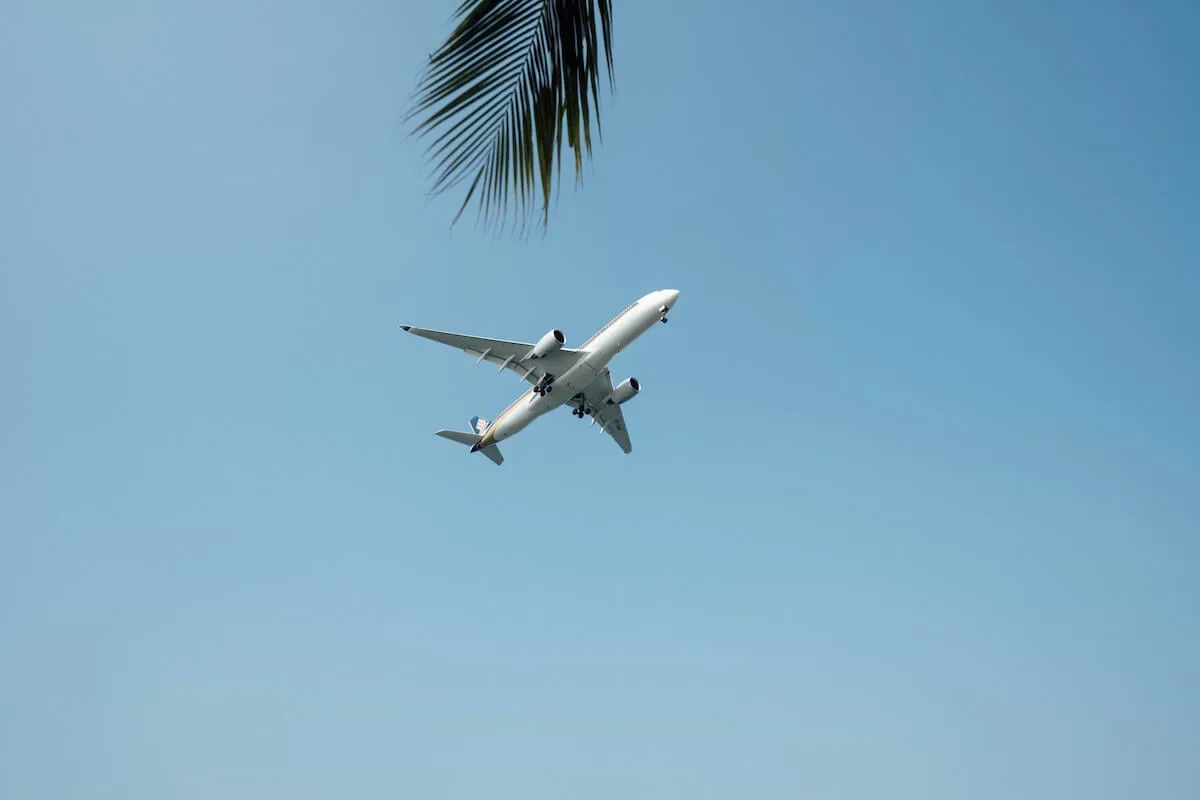 Disclaimer & Affiliate Disclosure: Almost all posts on this site contain affiliate links, and this travel guide to What to do on a long flight featuring the Top Tips for Long Flights is no different. This means that if you click on any of the links in this post (and make a purchase) as an amazon associate I may receive a small commission earns from qualifying purchases at no extra cost to you. Each post is carefully crafted to (hopefully!) answer all your questions and recommendations are made where we believe they will improve your trip and help with your planning. As such we thank you in advance should you decide to click & buy. Read my full Disclosure here.
Disclaimer & Affiliate Disclosure: Almost all posts on this site contain affiliate links, and this travel guide to What to do on a long flight featuring the Top Tips for Long Flights is no different. This means that if you click on any of the links in this post (and make a purchase) as an amazon associate I may receive a small commission earns from qualifying purchases at no extra cost to you. Each post is carefully crafted to (hopefully!) answer all your questions and recommendations are made where we believe they will improve your trip and help with your planning. As such we thank you in advance should you decide to click & buy. Read my full Disclosure here.
In This Post
- 1 Be Early & Pack Your Patience
- 2 Choose Your Seat in Advance
- 3 Wear Comfortable Clothing & Layers Which Can Easily Be Removed
- 4 Hydrate Hydrate Hydrate
- 5 Combat Jet Lag: Strategies for Time Zone Transitions
- 6 Pack a Personal Care Kit
- 7 Pack Ear Plugs, a Sleep Mask, and a Travel Pillow
- 8 Use Compression Socks
- 9 Wear Noise-Canceling Headphones: Create Your Oasis of Quiet
- 10 Stay Active: Move and Stretch Regularly
- 11 Curate Your Inflight Entertainment
- 12 Leverage Travel Credit Cards (Chase Sapphire, Capital One Venture, AMEX, etc)
- 13 Watch Your Diet: Opt for Light and Nourishing Meals
- 14 Be Aware of Baggage Fees
- 15 Follow Airline Guidelines: Prioritize Safety and Etiquette
Be Early & Pack Your Patience
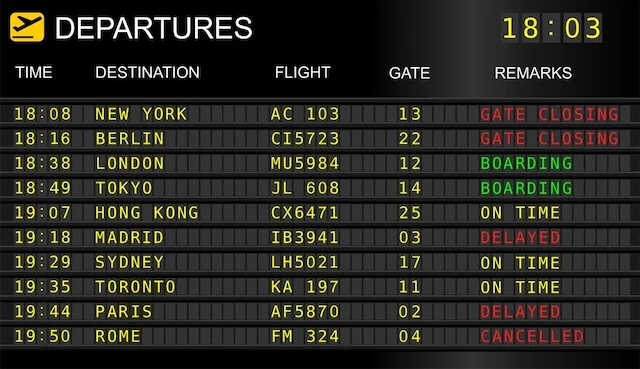 Arriving early at the airport sets the tone for a stress-free travel experience. Allow ample time for check-in, security procedures, and unforeseen delays. And remember that travel can be stressful, and being gracious with yourself, your fellow passengers and any airport staff can make the whole event easier for everyone.
Arriving early at the airport sets the tone for a stress-free travel experience. Allow ample time for check-in, security procedures, and unforeseen delays. And remember that travel can be stressful, and being gracious with yourself, your fellow passengers and any airport staff can make the whole event easier for everyone.
For domestic flights, it’s recommended to arrive at least 2 hours before departure. This window ensures you have enough time to check in, clear security, and make your way to the gate comfortably.
For international flights, aim to arrive around 3 hours prior to departure. This extra time accommodates potentially longer security lines, customs checks, and any necessary documentation, while still leaving you with plenty of time to find your gate (check that it exists, IYKYK) before grabbing a drink or a bite to eat, or heading to the bathroom.
Remember also, that during peak travel times, such as holidays, it may be necessary to arrive even earlier – just to be sure that you are not the ones sprinting to the departure gates.
Additionally, if you have lounge access through reward programs or qualifying credit cards (which we’ll discuss more below), arriving at the airport early allows you to eat, drink and relax in comfort before making your way to your departure gate. Just don’t get too comfortable and watch the announcement screens for gate and boarding info.
Choose Your Seat in Advance
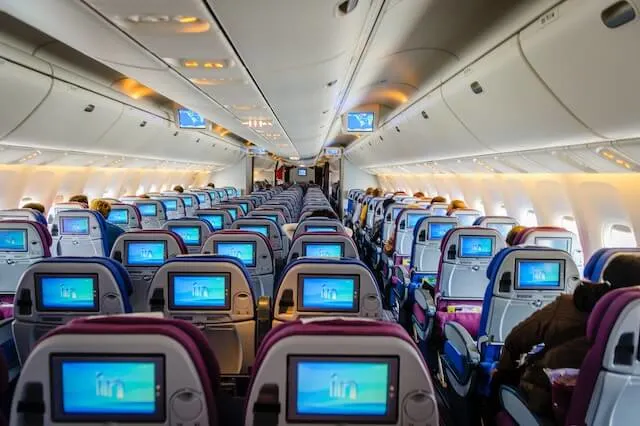 When booking a long-haul flight, your choice of seat can greatly impact your overall experience and is an essential part of travel planning. Be sure to research the airplane seat map, and try to sit away from the bathrooms to avoid being disturbed by constant movement, and take note to avoid any ‘bad seats’ that have been flagged on airline forums.
When booking a long-haul flight, your choice of seat can greatly impact your overall experience and is an essential part of travel planning. Be sure to research the airplane seat map, and try to sit away from the bathrooms to avoid being disturbed by constant movement, and take note to avoid any ‘bad seats’ that have been flagged on airline forums.
Some people recommend sitting as close to the front of the plane as possible, but I personally prefer nearer the back as there is usually more chance of getting an empty seat next to you (and so more space to spread out – did you know that ‘poor man’s business class’ is three economy seats together?!)
Plus, it is safer, and everyone is going to the same place. Sitting closer to the front won’t get you there any quicker, and while you may get off the plane quicker sitting up front, you still have to clear immigration and wait for your bags to be unloaded onto the carousel. Which normally puts everyone on the same level again.
Regardless, select an aisle seat for easy access to the aisle, allowing you to move around without disturbing fellow passengers – a good option if you are traveling solo. Alternatively, a window seat offers a cozy corner for resting your head and enjoying the view – and is my preferred option, flying laung haul or not.
Avoid the discomfort of a middle seat, if possible, at all costs, but if you find yourself stuck there, consider padding it with an extra layer (or blanket) for added comfort during the journey, and remember that both armrests are yours.
Wear Comfortable Clothing & Layers Which Can Easily Be Removed
As you prepare for a longhaul flight, the importance of wearing comfortable clothes cannot be overstated. Don cozy socks and attire that allow you to move freely without restriction.
Choosing breathable fabrics can help regulate body temperature, enhancing your comfort throughout the journey, as can wearing layers that can be easily taken off or put on. (This is also helpful when going through security).
An extra touch of luxury that can make flights more comfortable, grab a pair of disposable slippers from the room of your hotel – they’re great for wearing on the plane and for going to the bathroom in!
As someone that is constantly cold, I always travel with an extra warm jumper or hoodie and scarf. Together these provide an extra layer, can be worn overhead to block out light if I’m trying to sleep when the main cabin lights are on, and ultimately protect my skin from being exposed to the dry, recirculated air while keeping me warm.
Hydrate Hydrate Hydrate
 Staying hydrated is vital during long flights, and we highly recommend that you bring a refillable water bottle to fill up after passing security to avoid having to pay for bottled water.
Staying hydrated is vital during long flights, and we highly recommend that you bring a refillable water bottle to fill up after passing security to avoid having to pay for bottled water.
Drinking water regularly (and keeping alcohol to a minimum) helps combat the dry cabin air and prevents dehydration, ultimately contributing to your overall well-being during the flight.
For those that don’t want to drink liters of water and end up being up and down to the bathroom all flight, pack some Hydralyte, Nuun or Liquid IV and rehydrate in a more efficient way.
As a side note, if you do want to enjoy a few alcoholic drinks on the plane (I personally enjoy a few glasses of wine with the meal service) the above products have 3 times as many electrolytes than sports drinks or regular water which give your body a boost and can even help combat a hangover (just an FYI, in case you hit the free bar a little too hard.)
Combat Jet Lag: Strategies for Time Zone Transitions
 Traveling across multiple time zones can wreak havoc on your internal clock, resulting in the infamous jet lag. To minimize its effects, there are several effective strategies you can employ.
Traveling across multiple time zones can wreak havoc on your internal clock, resulting in the infamous jet lag. To minimize its effects, there are several effective strategies you can employ.
Begin by adjusting your sleep schedule a few days before your departure. Gradually shift your bedtime and waking hours closer to those of your destination’s time zone. Once on the plane (on the last flight before arrival), set your clocks to the correct time in your destination, and try to stick to a natural rhythm within that.
Naturally, stay hydrated throughout the journey, as dehydration can worsen jet lag symptoms. Upon arrival, spend time outdoors and expose yourself to natural light, which helps regulate your body’s internal clock.
You can also embrace technology to aid your transition. Consider using apps like “Timeshifter” or “Jet Lag Rooster” which provide personalized recommendations based on your itinerary, sleep patterns, and destination. These apps offer insights into when to seek or avoid light, as well as when to nap or stay awake, effectively helping you reset your body clock.
Incorporate these strategies along with general good practices like staying hydrated, avoiding excessive caffeine and alcohol, and maintaining a healthy diet. By taking proactive steps to manage jet lag, you can optimize your body’s adjustment to new time zones, ensuring you arrive at your destination feeling more refreshed and ready to explore.
Pack a Personal Care Kit
Grab yourself a clear TSA-approved case and build the perfect plane survival kit to slot into your personal item:
- Antibacterial wipes
- Face Wipes
- Hand sanitizer
- Toothbrush & mini toothpaste (it’s amazing how much better you can feel by just brushing your teeth!)
- Floss Sticks / Dental Floss
- Face mask and/or under-eye patches (yes you can, and absolutely should, be wearing them on the plane – especially on long haul flights – just remember to make sure your hands are clean before applying any products!)
- Lip Balm
- Travel-sized moisturizer and/or hand cream
- A small pack of tissues
- Mints / Chewing Gum
- Spare hair ties
- Any medications you’ll need on the plane (prescription, jet-lag preventative, anything that could help you fall asleep, motion sickness abating, etc)
Pack Ear Plugs, a Sleep Mask, and a Travel Pillow
These are the holy trinity when it comes to long haul flight essentials.
Earplugs, a good sleep mask, and a comfortable travel pillow can make all the difference when it comes to getting some much-needed shut-eye and help you create your own cocoon of tranquility amidst the hustle of the cabin.
The eye mask blocks out ambient light, facilitating deeper sleep, while earplugs shield you from noise disruptions, promoting relaxation and rest. And a travel pillow supports your neck and depending on your posture, your back, to help make sleeping more comfortable, ensuring your body maintains proper alignment and reducing the likelihood of discomfort or stiffness upon arrival.
Use Compression Socks
We mentioned cozy socks higher up the list, and this isn’t meant to be contradictory, but in addition too. (And can even be worn under the cozy socks!)
Once on the plane, wearing compression socks offers multiple advantages for your comfort and well-being. These socks exert gentle pressure on your legs, enhancing blood circulation and preventing swelling, a common discomfort during extended sitting.
By promoting healthy blood flow, compression socks also reduce the risk of deep vein thrombosis (DVT), a condition where blood clots form in deep veins, which can be exacerbated by immobility.
Additionally, compression socks alleviate leg fatigue and discomfort, helping to maintain higher energy levels throughout the flight. They can aid in preventing the development of varicose veins by supporting vein health and reducing the expansion of veins due to poor circulation.
Furthermore, wearing compression socks may contribute to a quicker recovery post-flight by minimizing muscle soreness and fatigue upon arrival (and so why they are one of my top travel essentials.)
When choosing compression socks, opt for moderate compression (15-20 mmHg) and consult a healthcare professional if you have any medical concerns.
Wear Noise-Canceling Headphones: Create Your Oasis of Quiet
Whether you’re on planes, trains, buses or any other form of public transport, frequent flyers know that a pair of noise-canceling wireless headphones can be a lifesaver.
Whether you want to block out the noise of a crying baby (we know it’s not their fault) or an over-excited child, or simply watch a movie or TV show in peace (or even have them on with nothing playing for the ultimate sound of silence!) these are the 1 item I would never travel without. Choose from over-ear or earbuds (or both) depending on what you like.
Escape the constant hum of the aircraft engines by wearing noise-cancellation headphones. These technology marvels reduce ambient noise, providing you with a more peaceful and serene environment for relaxation.
Stay Active: Move and Stretch Regularly
We all know that long flights can make us feel like a human pretzel, right? But you can fight that stiffness and take steps – literally – to keep your body in the groove.
When the seatbelt sign is off, take a little stroll up and down the aisle. It’s not just about stretching your legs; it’s like a secret weapon against the dreaded blood clot situation (compression socks can’t take all the strain, you know!).
And when you’re stuck in your seat, don’t worry – there’s still plenty you can do. Flex those ankles, lift your legs a bit, and give those calves a good stretch.
Remember, it’s not just about dodging the stiffness—it’s about keeping your circulation happy and your muscles feeling less tired.
Curate Your Inflight Entertainment
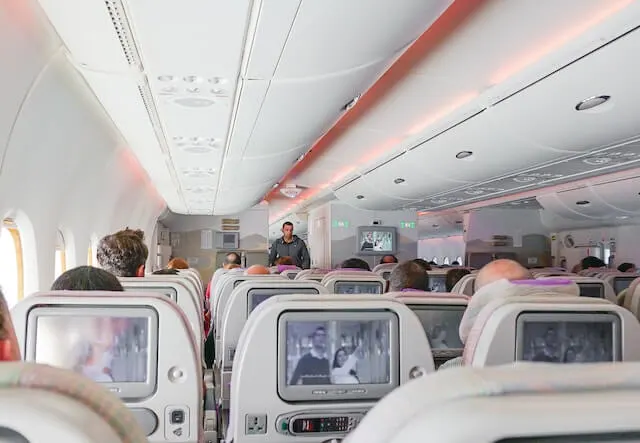 Before your flight, research available entertainment options for your chosen airline. Most have a rather decent selection of movies, music, TV shows, and games that can help you pass your time in the air. But it doesn’t hurt to have extra options.
Before your flight, research available entertainment options for your chosen airline. Most have a rather decent selection of movies, music, TV shows, and games that can help you pass your time in the air. But it doesn’t hurt to have extra options.
Load up your Kindle, download an audio book or two, your favorite music playlist, or a few episodes of your favorite show (or just a recent obsession) in case you’re looking for a little ‘home comfort’ during your international travel.
Extra: If you do plan on using the inflight entertainment system, and happen to have wireless Bluetooth-capable headphones, we would highly recommend purchasing an AirFly which will allow you to connect to the system without having to manually plug in.
This is a game changer when you are trying to fall asleep and don’t have to worry about the wire coming loose or being pulled out, and is super handy when you want to go to the bathroom without disconnecting everything.
Leverage Travel Credit Cards (Chase Sapphire, Capital One Venture, AMEX, etc)
 Maximize your travel experience by utilizing travel credit cards like Chase Sapphire, Capital One Venture, and AMEX. These cards offer an array of benefits such as lounge access, priority boarding, and rewards for travel-related expenses.
Maximize your travel experience by utilizing travel credit cards like Chase Sapphire, Capital One Venture, and AMEX. These cards offer an array of benefits such as lounge access, priority boarding, and rewards for travel-related expenses.
With airport lounge access, you gain a comfortable haven to relax before flights, while priority boarding ensures you’re among the first to board the plane.
Moreover, these cards provide the opportunity to earn points through travel-related spending, translating into rewards like free flights and hotel stays.
Watch Your Diet: Opt for Light and Nourishing Meals
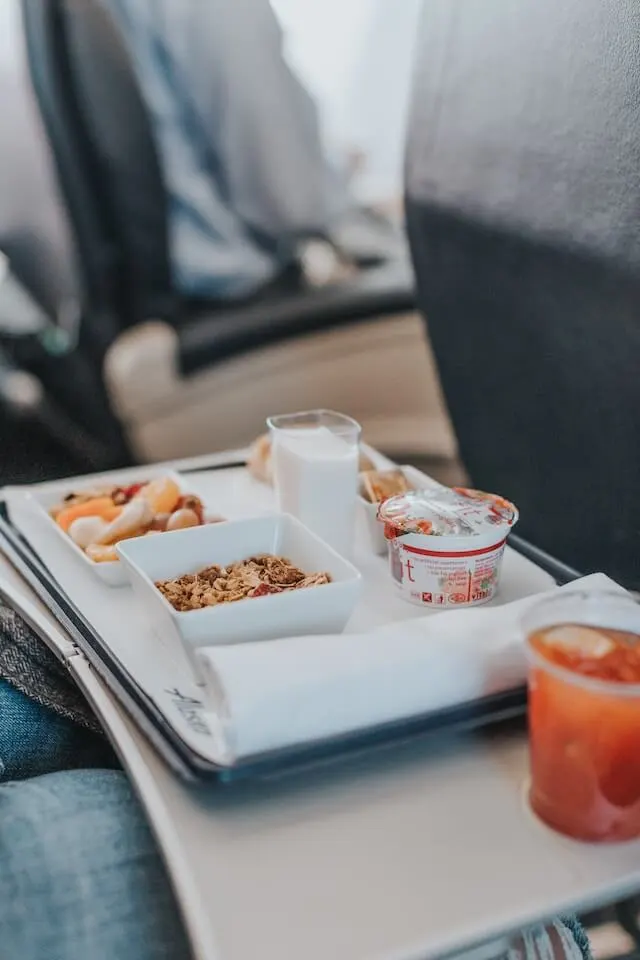 When it comes to in-flight dining, opting for light and easily digestible meals is a smart move. This choice helps you sidestep that uncomfortable bloated feeling and keeps you feeling more comfortable throughout the journey. Mindful food and drink selections aren’t just about cravings; they’re a key aspect of your overall well-being during the flight.
When it comes to in-flight dining, opting for light and easily digestible meals is a smart move. This choice helps you sidestep that uncomfortable bloated feeling and keeps you feeling more comfortable throughout the journey. Mindful food and drink selections aren’t just about cravings; they’re a key aspect of your overall well-being during the flight.
Consider going for options like lean proteins, salads, and whole grains. These choices provide essential nutrients while keeping your digestive system happy. Steer clear of heavy, greasy, and overly processed foods that can leave you feeling sluggish and uncomfortable.
Staying hydrated is equally important (as we mentioned above), so make sure to drink water regularly to prevent dehydration, which can contribute to fatigue and discomfort.
Top Tip: A lot of people find their tastebuds are not as sharp when 30,000+ feet in the air, and if you are one of these, try pre-boarding a spicy meal option and enjoy an extra bit of flavor.
Be Aware of Baggage Fees
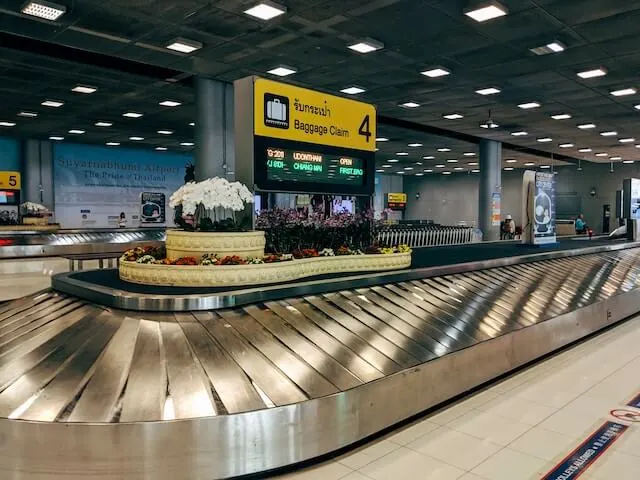 Navigating baggage fees can be a game-changer in optimizing your travel budget. For international long-haul flights, it’s worth noting that many airlines often provide more generous included baggage limits compared to shorter flights.
Navigating baggage fees can be a game-changer in optimizing your travel budget. For international long-haul flights, it’s worth noting that many airlines often provide more generous included baggage limits compared to shorter flights.
This can be a boon if you’re planning on packing a bit extra.
However, be cautious while these allowances might be higher, exceeding them can lead to those dreaded excess baggage fees that can quickly escalate costs.
To maximize both savings and convenience, there is also the option of traveling with carry-on bags only. These ensure that you keep your essentials within arm’s reach throughout the journey, and don’t have to worry about your luggage being lost or left behind (We highly recommend an AirTag, SmartTag, or Tile to keep track of hold luggage any time you fly).
Although, be aware, where long haul airlines might offer an increased hold luggage allowance, they sometimes compensate by reducing cabin baggage limits to 7kg and under. Keep this in mind when deciding on your luggage strategy.
Follow Airline Guidelines: Prioritize Safety and Etiquette
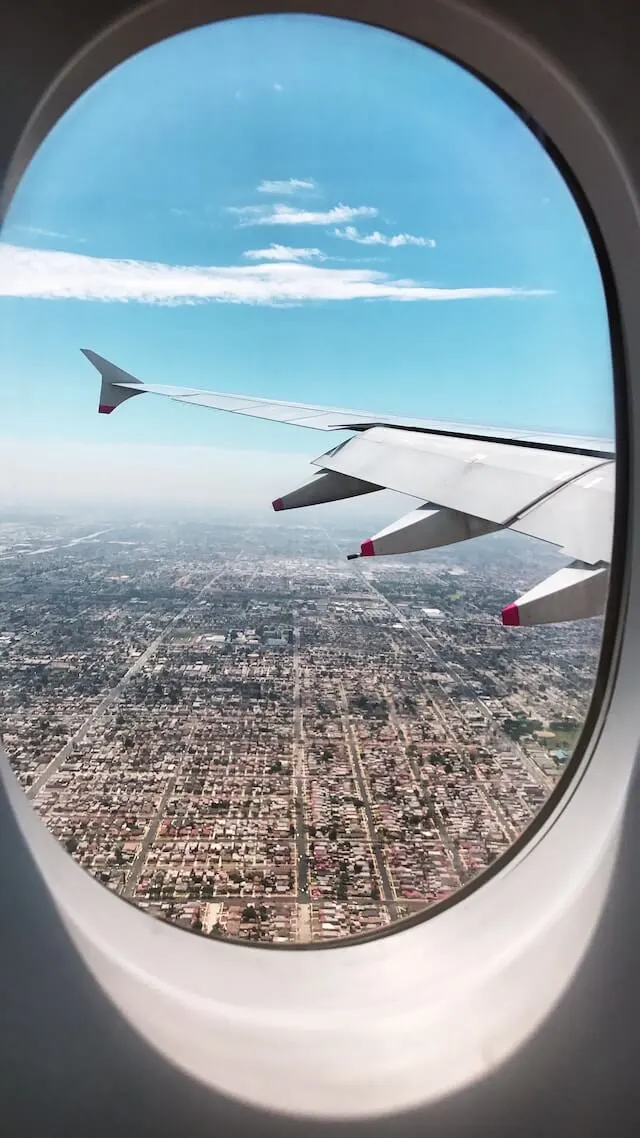 Remember to fasten your seat belt at all times, in case of unexpected turbulence and abide by all safety instructions given by the flight attendants. Being a considerate and informed traveler contributes to a smoother flight experience for everyone onboard.
Remember to fasten your seat belt at all times, in case of unexpected turbulence and abide by all safety instructions given by the flight attendants. Being a considerate and informed traveler contributes to a smoother flight experience for everyone onboard.
Top Tip: If sleeping (or trying to sleep), be sure to fasten your belt on top of your blanket, this will help the airline staff check you are secure without disturbing you, and allow them to focus on their other tasks and obligations.
As you embark on your long-haul journey, keep these 15 tips in mind to optimize your comfort and well-being throughout the flight. From choosing the right seat to packing essential items and maintaining healthy circulation, these strategies will help you not only survive but thrive during long flights.
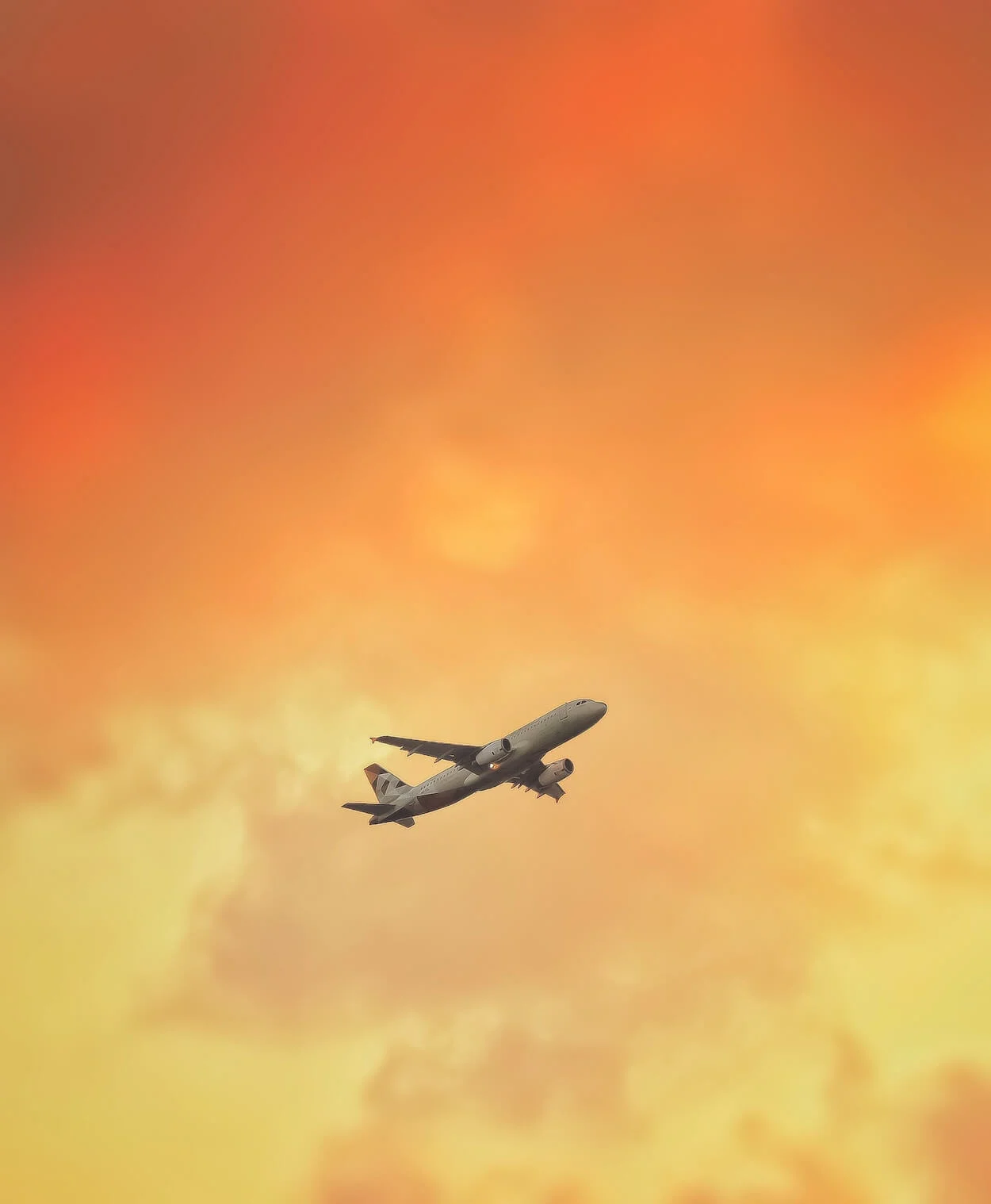
And if you liked our guide to what to do on longhaul flights including our top tips for long flights take a look at the other recent posts, packing tips, travel accessories, travel resources, travel guides, ultimate guides, and packing lists in this series:
- Group Tours: See more in less time – the Best Group Tours on Every Continent
- Europe: Rome Travel Guide for First-Timers, Guide to Barcelona for First Time Visitors & The Best Places to Visit in Spain
- Amazing Africa: Check out the Best Places To Visit in Africa and start exploring this incredible continent – or just watch the Best Movies About Africa and get your armchair travel on!
- Festivals: Festival Fan? You’ll love these Incredible Festivals From Around the World
- Be Prepared: The Best Carry On For Travel (tested on most airlines!) PLUS the best passport wallets & 40 Insanely Useful Backpacking Essentials to make sure you have everything you need once you’ve been inspired by our inspiration quote series!
Hi There! Thanks for reading my travel tips for the TOP Tips for Long Flights I just wanted to let you know that this post may contain affiliate links, which means if you purchase something after clicking a link, I may get a small commission – which is at absolutely no cost to you. If you enjoyed this article and are going to be searching for some of the things I mention anyway, I would love it if you could click through from the links above & thank you ahead of time! Read my full disclosure here. And thank you for reading the MakeTimeToSeeTheWorld travel blog.




